
Beamers or projectors promise the possibility of showing vacation pictures on any wall, watching Netflix or playing a round of Mario Kart with your best friends on the Nintendo Switch, for example. But most projectors are far too clunky and unwieldy to carry around all the time. The Formovie P1 pocket laser projector promises to solve this problem and at the same time offer an appealing image quality despite its extreme portability. I’ll clarify whether the Formovie P1 is worth it despite, or more accurately because of, its small size in this review.
The scope of delivery of the Formovie P1
- Hard shell carrying case
- USB type-C power adapter
- USB Type-C to USB Type-C cable
- Remote control would have been nice
In addition to the projector itself, the package also includes a black hard-shell carrying case that protects the Formovie P1 from damage and is easy to transport with a carrying loop. The Formovie P1 does not require a conventional power adapter, and uses a USB Type-C power adapter, which means that a powerbank can also be used for power. A black USB Type-C power adapter and a corresponding cable are already included, so you can start using the Formovie P1 without any other accessories.
I would have liked to see a remote control included, because the Formovie P1 can only be operated using the buttons on the device and the cover on the front. Therefore, you have to get up again in the evening in bed, for example, to turn off the projector. In the same way, a quick volume adjustment can also only be done via the connected video sources.
The design of the projector
- Grey-bronze design
- Beautiful accents
- Compact form factor
The design of the Formovie P1 is simple and elegant. The shape of the projector is roughly rectangular with highly rounded corners, and the surface is coated with a matte black color that gives it a classy look. With a size of 150.8 x 83 x 24.6 mm and a weight of only 300 grams, it is very small and lightweight, so you can take it anywhere. A carrying case, for the projector and its accessories, is also included, which is very convenient.
On the front of the projector there is a sliding cover in bronze color with the Formovie logo, which protects the lens of the projector from dirt and scratches. When it is pushed open, the projector turns on, when it is pushed closed, it turns off. It also serves as an on/off switch. On the back is the ventilation opening, as well as the connections of the Formovie P1.
The top of the projector includes the some control buttons, which can be used to switch between modes or to store a WiFi network, for example, and a status LED, which indicates the projector’s operating status. On the left side of the projector is a focus adjustment wheel, as well as a red flag with the ALPD logo. On the other side is a bronze panel with the words “Beam into the future” and an opening for ventilation / for sound. The bottom includes two stickers with information about the device, as well as a few more openings for ventilation.
The workmanship of the device
- Robust finish
- Tactile buttons
- Quiet operation
The workmanship of the Formovie P1 looks high-quality and solid. The buttons on the top are not spongy, but have a decent tactile feedback. The cover on the front feels very sturdy and the mechanism could certainly be opened and closed thousands of times without changing anything.
The included carrying case is well padded, has plenty of compartments for USB sticks, SD cards and the like, and keeps the projector and its accessories safe. It can be opened and closed by means of a zipper. For portability, there is a handy loop on the back of the case.
During use, the Formovie P1 remains extremely quiet and correspondingly cool even after a long time.
Connectivity
- USB Type-C
- USB type-A
- HDMI
- AUX
The Formovie P1 has four different ports that serve different functions. First, there is a USB Type-C port, which is necessary for powering the projector. Secondly, there is a USB-A port that allows you to connect storage devices like USB sticks or external hard drives to play content stored on them. There is also, of course, an HDMI input that can be used for the video signal from other devices such as notebooks or game consoles. Finally, there is an AUX output, which is used to play the audio through another speaker or headphones.
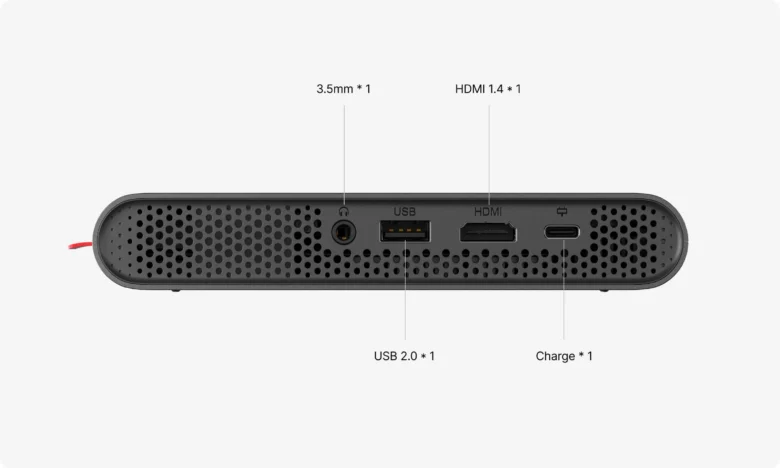
The picture of the Formovie P1
- Designed for short distance
- Good brightness
- Resolution below FHD
Due to the nature of a projector, the size of the image is completely variable and depends on the distance between the projector and the surface onto which the image is to be projected. So basically the size of the image is limited only by the contrast or brightness and resolution, because if the brightness is too low, that is, too low contrast to the brightness of the room, the image will not be recognizable from a certain distance. If the resolution is not high enough, the image will look blurry and pixelated above a certain size.
The Formovie P1 has a native resolution of 960 x 540 pixels and a brightness of 800 ANSI lumens with a contrast of 600:1. The brightness struck me as very positive. For such a small projector, the Formovie P1 is surprisingly bright – even in rooms with bright sunlight. The low resolution, on the other hand, is unfortunately clearly noticeable when projecting onto close surfaces at a distance of about one to two meters. I could see the low resolution particularly clearly on text. At greater distances, the low resolution is less noticeable because the edges then blur easily.

To make the image easy to view even at a short distance, the Formovie P1 projects the image at a slight upward angle. Therefore, the projector can easily be placed on a flat surface and nothing needs to be placed underneath the projector to view the image at an appropriate height. The 1.2:1 beam ratio allows for a large image at a short distance.
ALPD
ALPD (Advanced Laser Phosphor Display) is a technology used in projectors. Unlike conventional lamps, it uses a laser as the light source. The technology is known for its brightness and color accuracy. ALPD projectors are usually more expensive than conventional projectors, but they also offer higher image quality. Another advantage of ALPD projectors is their long life and lower power consumption. Formovie advertises a lifespan of up to 25,000 hours in the case of the P1. Due to the more efficient technology, the Formovie P1 also only has a power consumption of up to 30 watts. However, one disadvantage of ALPD projectors is that they are still often more expensive compared to conventional projectors.
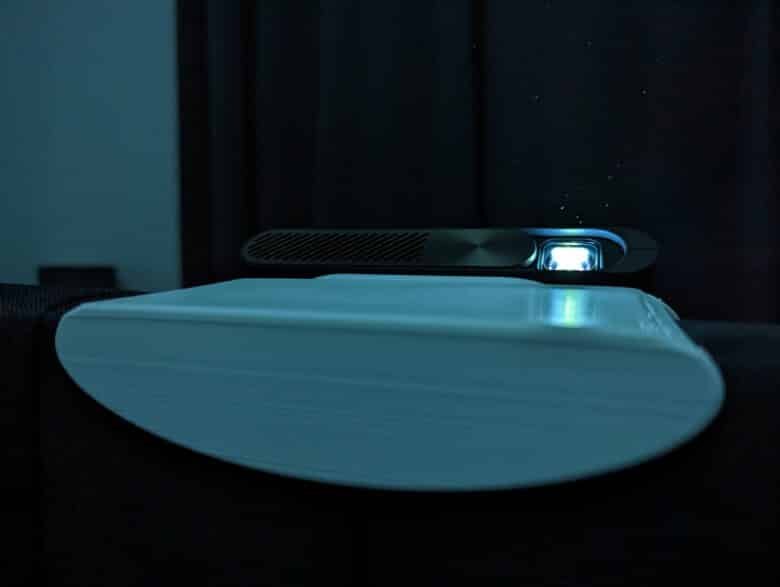
Sound disappoints in Formovie P1 review
- Clear highs
- Missing lows
- Flat, muffled sound
- Can be used as a mobile speaker
Unfortunately, the biggest problem with the Formovie P1 is the sound. The speakers are not very powerful and already start to distort at low volumes. In addition, the sound is very muffled and flat because the lows are missing. This significantly affects the listening experience. Therefore, I would advise everyone to use another speaker as an accessory, such as a soundbar, which offers better sound.
I recorded two sound samples with my Blue Snowball Ice microphone from a distance of about 20 cm from the projector. First, a music sample from the song “Crabrave” by Noisestorm.
I also included a voice sample from the video “This is what really happens when you get sick!” by Kurzgesagt.
The highs of the audio tracks sound pretty good in my opinion. However, the lows are noticeably lacking and the whole recording seems extremely flat as a result.

Formovie advertises that you can also use the projector as a mobile speaker. I don’t think that’s a good idea, though, because the sound isn’t much better than that of a cell phone speaker. That’s a shame, because the picture of the Formovie P1 is clearly better than the corresponding sound. Apart from that, it is of course practical that a speaker is built into the projector. Thus, basically no other device is needed and the Formovie P1 is fully functional, which again makes a lot of sense in terms of the portability aspect.
The software of the device
- Slim operating system
- Can play multimedia from external storage device
- Wireless transfer
- No streaming via projector itself
A lightweight operating system is installed on the Formovie P1. Among other things, the operating system can display images, videos, music and text files from an external storage medium, such as a USB stick. Besides that, Chromecast / AirPlay or HDMI can also be selected as input in the menu. Streaming of Internet content like YouTube, Netflix and Co. via the projector directly, is unfortunately not possible.

In order to use Chromecast or AirPlay, the Formovie P1 must first be connected to a WiFi network. This is also done in the operating system menu – but it is extremely cumbersome. Since the Formovie P1 only has four adjacent buttons for “up”, “down”, “left” and “right” as well as a “confirm” button, input via the projector’s on-screen keyboard is very unintuitive. At the same time, the image wobbles with every input, since you end up pressing around on the projector. Fortunately, however, you only have to configure the WiFi network once in most cases.
Other features of the Formovie P1
- Keystone correction
- Purely virtual
- Loss of resolution
The Formovie P1 has an automatic virtual keystone correction feature. Keystone correction ensures that the projected image retains a rectangular shape even when projected at an angle. The projector has a gyroscope inside, which allows it to determine its spatial orientation and consequently calculate the projection angle. The calculation is automatic and the device then scales the image accordingly. However, the correction is only done digitally on the Formovie P1, which causes the image to lose sharpness and resolution.
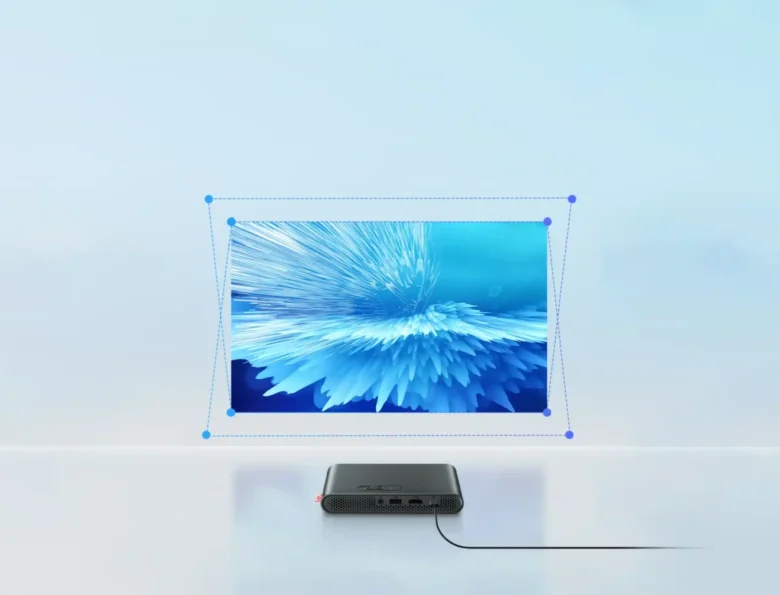
Since the Formovie P1 already has a low resolution, it is therefore advisable to set up the projector as horizontally as possible to maintain the image quality.
Portability convinces in the Formovie P1 test
- extremely portable
- suitable for EDC
- Installed rechargeable battery would have enabled operation without power source
The Formovie P1 stands out for its premium portability. It has a compact and convenient design that makes it very easy to carry around. It is about the size of a large power bank, so it can easily be put in any pocket without taking up much space.

It’s a shame, however, that the projector doesn’t have a built-in rechargeable battery, which would allow it to run without a power adapter for a period of time.
Due to the compact design of the projector, I was able to use a 3D printer to print a mount for my bed to hang the Formovie P1 on and adjust the projection angle.
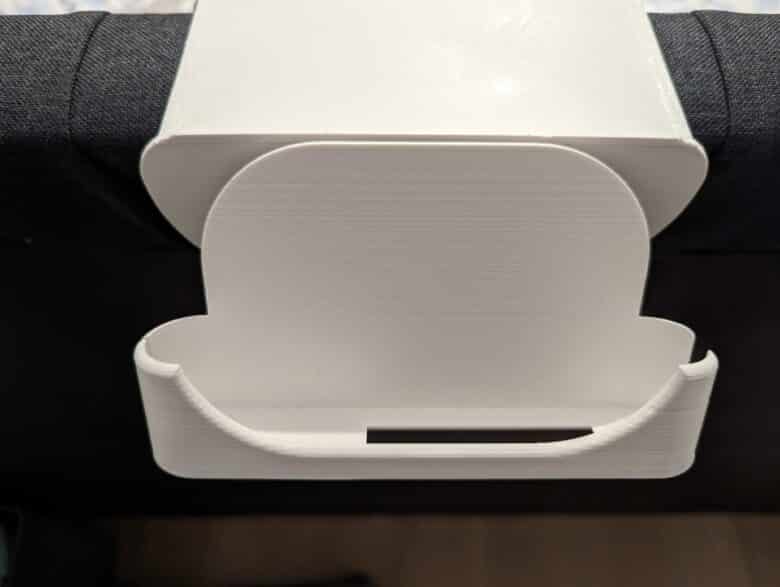
Since the keystone correction is disabled for extremely steep angles, projection onto the ceiling is also possible. For relaxed series binging in bed in the evening, the projector is really well suited, only the sound is a bit disappointing.
Summary of the Formovie P1 Review
If you’re looking for a portable projector to add to your daily kit, the Formovie P1 is worth a look. It is very compact and extremely powerful for its size thanks to ALPD technology. The projector supports various ways to show its content – be it via HDMI, USB or even wirelessly from a smartphone or computer. However, the small size and high mobility also come with some drawbacks, such as the low resolution and tinny sound.
The price of 249, 00 $ at the time of writing ist nicht gerade einSchnäppchen, with the projector already discounted from its actual $399.00 price. Compared to other small format laser projectors, such as the Wemax Go or the Yaber Pico T1, the price/performance ratio is in the mid-range. I find the Wemax Go particularly interesting here, which seems to be the same model as the Formovie P1, just with a different logo and case color. This one is currently available through an offer even for $99.00, over $100.00 cheaper than the Formovie P1. The Yaber Pico T1 is slightly more expensive than the Formovie P1 at the time of writing and is available for $289.99.
If portability is not that important, then I would advise a “regular” projector. These are also available for around $200.00 and can offer higher resolution and most likely better sound quality due to the less compact design.
Formovie P1
Scope of delivery
Design
Workmanship & Connections
Image
Audio
Software & Features
Portability
Value for money
83 / 100
An extremely portable projector that unfortunately suffers somewhat from the compromises of its portability.
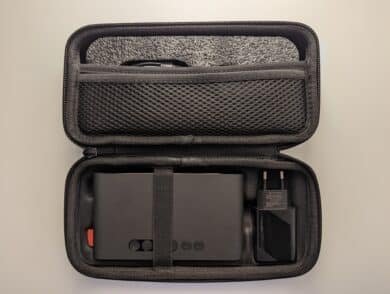
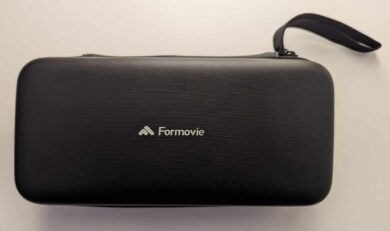
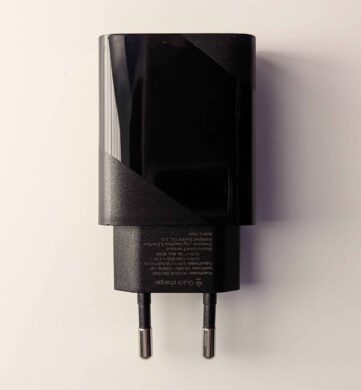
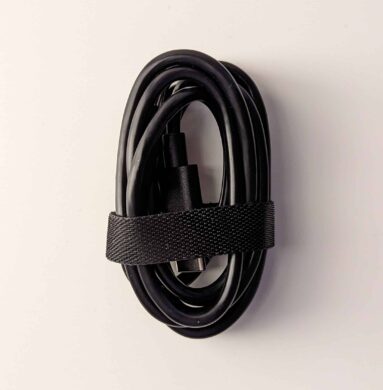
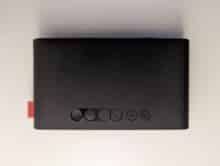
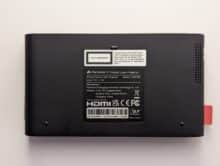
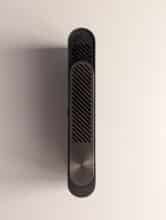
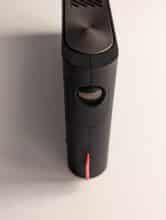
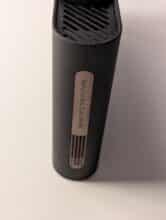


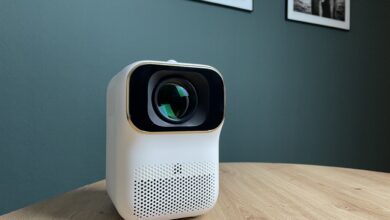
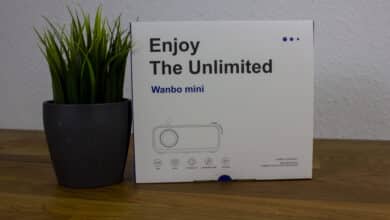
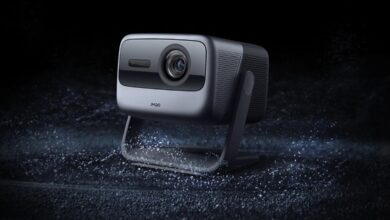
No replies yet
Neue Antworten laden...
Gehört zum Inventar
Beteilige dich an der Diskussion in der Basic Tutorials Community →